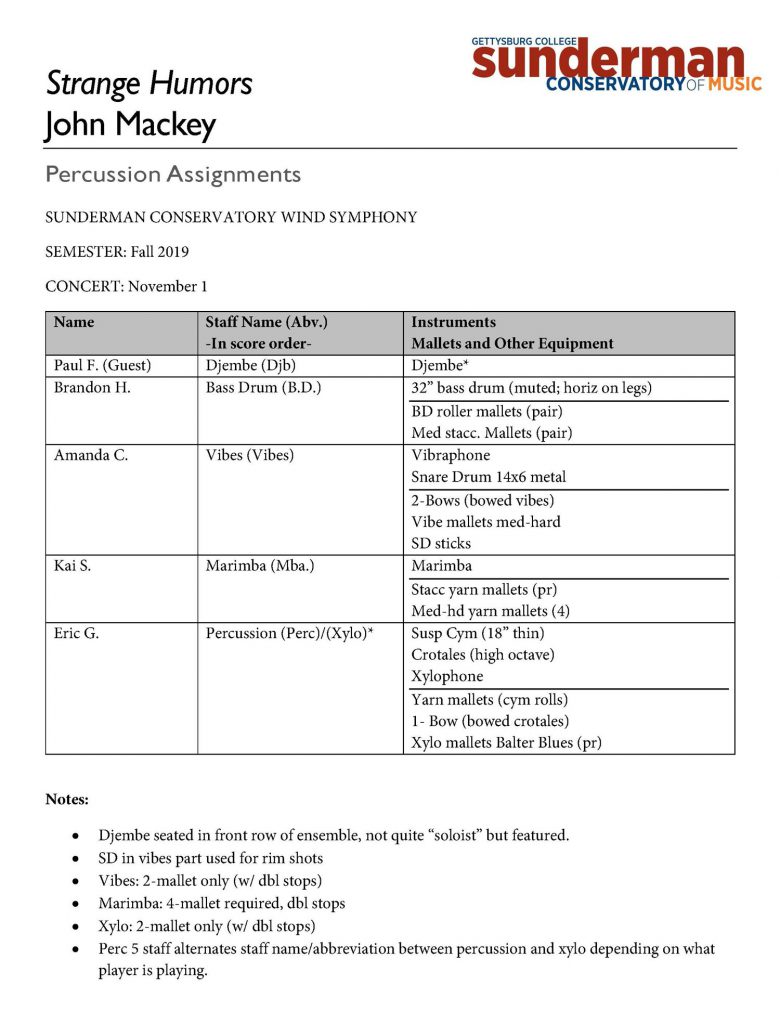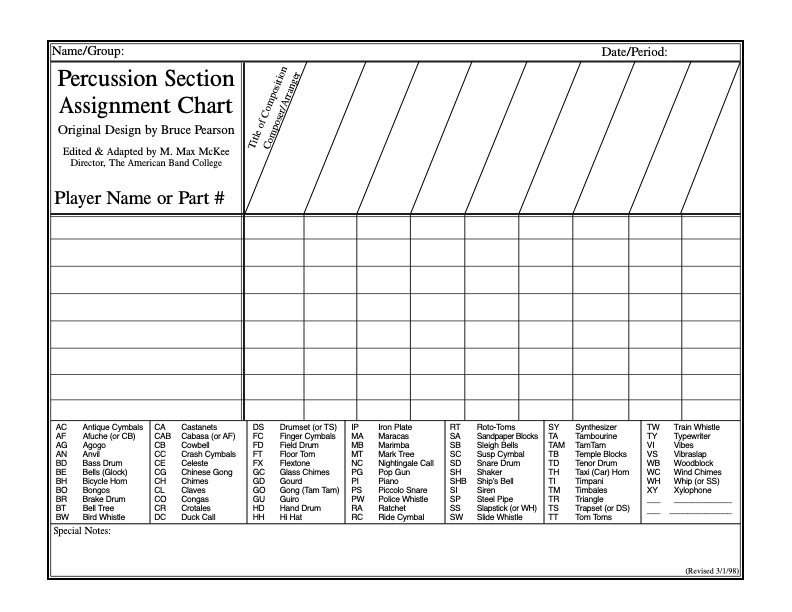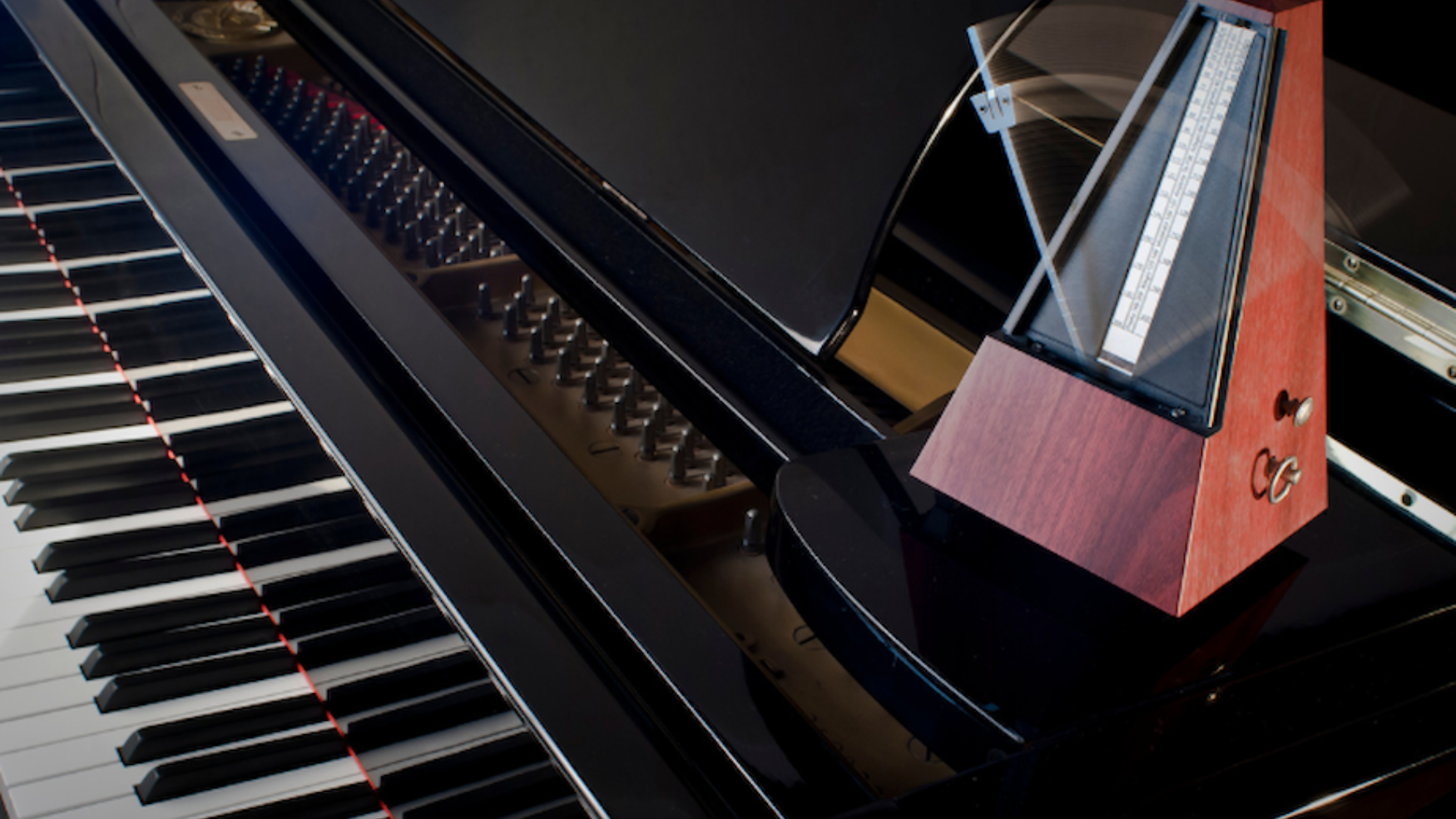Determining percussion needs and assigning parts
Every conductor has experienced it: rehearsal is progressing smoothly, then the triangle part is missing. “Who is playing the triangle?” “Umm…we didn’t know we needed it.” Or “We can’t find it,” your percussionists reply.
There are three keys to solving this dilemma:
- Students must be able to quickly and easily locate the instruments and equipment they need,
- Students must know what they need and when they need it, and
- Students must set up their stations efficiently for each piece.
This is the second article in a three-part series addressing each of the keys to success. Here we examine percussion scoring and creating percussion assignment charts. While there is some standardization of percussion writing, almost every piece requires different instruments and a different number of performers. Preparation and score study prior to the initial rehearsal is key to a successful first reading. It is important to do this work in advance to avoid confusion at the first rehearsal, especially if percussionists are young or do not get their parts ahead of the first reading.
Percussion staves can be arranged in several different formats, and each poses different challenges to the conductor and percussionists. Some scores label staves by instruments, as in snare drum, bass drum (often combined with cymbals), xylophone, etc. Others are simply labeled Percussion 1, Percussion 2, and so on. In both cases, an examination of the score and parts is important. Many composers list all the percussion instruments required in front matter or on the first page of music on each staff, but just as many do not. It is not uncommon to find a staff labeled “snare drum” and assume the snare drum is the only instrument called for on that staff, only to find the snare player is expected to double tambourine, claves, or another percussion accessory not listed at the beginning. This causes confusion during initial readings when players may not be aware of all the instruments they need before beginning the piece. Best practice is to examine both the score and the individual parts, listing all the instruments required.
After establishing the complete list, the conductor can decide how best to assign each part. Scores that list parts as Percussion 1, 2, etc. are often designed for one person to cover each part, but that is not always the best option for students. It may be that a part should be shared by two players, especially if there are fast transitions between instruments. A conductor may also split a part to more evenly distribute parts among many percussionists. For some pieces, it could be better to combine several parts into one, especially if there are not enough percussionists to cover the parts as designed by the composer. When studying scores, be sure to note not only which instruments are required but how much time percussionists may have to switch between each instrument. Conductors must also consider technical demand; it may be that the triangle part requires less proficiency than the tambourine part, for example. Through careful assignment of each part and sharing parts as appropriate, conductors can ensure each student is performing a part most suited to their skills that will – hopefully – also help them further develop those skills and improve as a percussionist.
Conductors can assist their percussionists through the creation of a percussion assignment chart for each piece. There are several pre-made charts available online, including an excellent one originally designed by Bruce Pearson, edited and adapted by M. Max McKee, Director of the American Band College.
Whether you choose a pre-made chart or create your own, the chart should include each student’s name and all the instruments they are playing for each piece. This chart can be laminated and posted where percussionists can refer to it easily, and can also be handed out for inclusion in each student’s folder. The conductor may also wish to create their own chart or assignment list for individual pieces. This way, students can be listed in score order and any special notes can be included. (Figure 2: pdf/image of conductor’s assignment list) The conductor’s list can be kept inside the front cover of the score so it is always available when rehearsing. Keeping the list or chart in the score when the piece is returned to the library is a good idea; then the next time the piece is brought out most of the work is already complete.

Finally, students must know what instruments to set up first, second, and so on. This can be achieved by simply writing the rehearsal order on a white board or chalk board at the front of the room. Having all musicians put their music in “rehearsal order” can be a time-saver for the entire ensemble as well.






